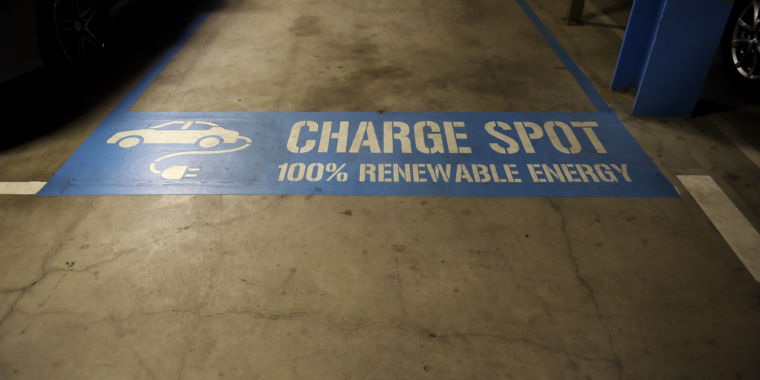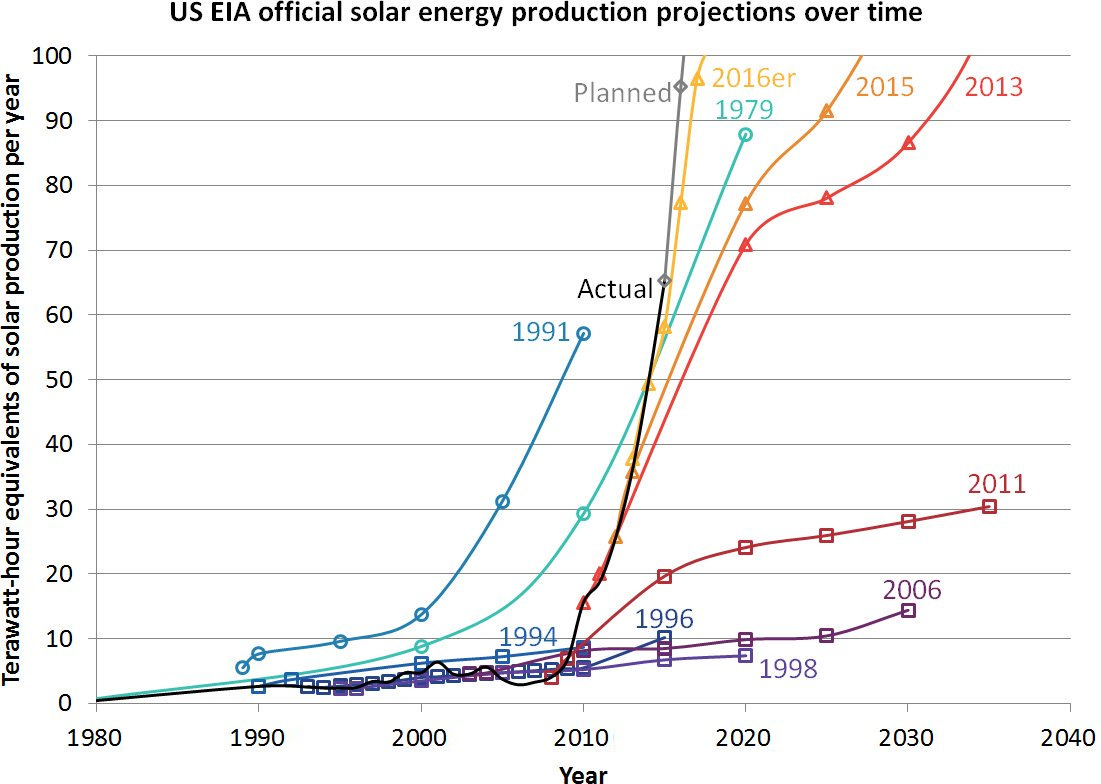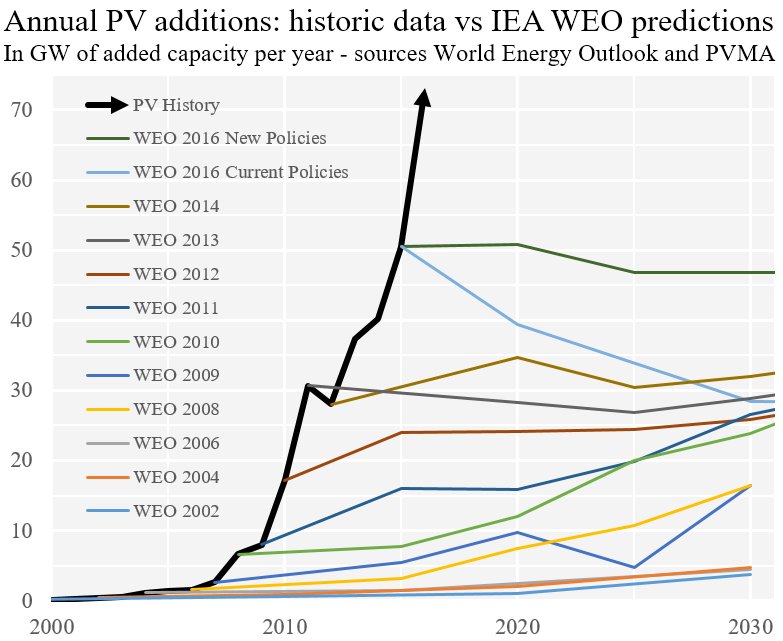Canoo has competition for weirdest vehicle in the Cybertruck or the Bollinger.

How many electric cars can the grid take? Depends on your neighborhood
High concentration of EVs can lead to equipment trouble later.
Canoo has competition for weirdest vehicle in the Cybertruck or the Bollinger.
Bollinger’s pickup is just plain industrial. Something Rosie the Rivetter would have been proud to have made. I wonder if you can get a working steam engine as an option.
I leased a 2020 Bolt a few weeks ago and so far it’s been great. I’ve been interested in EVs for many years and considered a Leaf about 8 years ago when I replaced my last car but life circumstances at the time were not quite right. My car was wrecked back in October and we have not needed to replace it due to working and schooling at home, and just relied on my wife’s car. My job has now shifted to working from home permanently, but our kid will be returning to school soon and going to various camps this summer, and we decided it was time to replace the car that was wrecked to ease those logistics. The incentives on Bolts right now are huge and I liked the idea of a lease so we can see how well an EV works for a few years. I imagine there will be a ton more EV choices by that time, too.
My wife has actually been using the Bolt the most, taking it to work on the days she goes in. It’s been fun chatting with other owners online to learn the tricks and tips for owning an EV, exploring the charging network around town, and playing around with the regenerative braking. A lot can change in 3 years, but a couple weeks in I have no complaint and can see continuing with EVs in the future.
Huh. I really like the design of the Canoo. Seems very practical. I have a 2019 4Runner, so not in the market. And as we will always have dogs that travel with us, a pickup type vehicle doesn’t really work well. Might if the camper shell is done right and has access from driver compartment.
I admit I have not read all 216 replies, but I have to chuckle at the “I’ll never get one” folks.
They are either planning on keeping their current (or soon to be purchased) car for the rest of their lives, or taking public transport. Because the Electric car revolution is coming baby, and there will be damn few (if any) gasoline cars for sale in 20 years.
The Canoo pickup looks a bit like the Volkswagen Microbus pickup truck.
The Canoo pickup looks a bit like the Volkswagen Microbus pickup truck
That was something I’ve though about EVs for a while – modern EVs don’t have the motor up front like where the engine would be in an ICE car. So most of them use that space for a front trunk. But why do you even need a hood at all on an EV? Why not push the front seats forward and eliminate the hood, like a VW microbus, which would allow for more space inside the vehicle for passengers and cargo. I’m guessing you probably have to have some space between the front seats and the front of the car for safety reasons, so you probably couldn’t quite go full VW bus style, there’s no real reason for them to have a hood as long as what Teslas have other than style.
Actually, one of the concept vehicles based on Volkswagen’s MEB platform is an updated version of the Microbus.
That was something I’ve though about EVs for a while – modern EVs don’t have the motor up front like where the engine would be in an ICE car. So most of them use that space for a front trunk. But why do you even need a hood at all on an EV?
A blunt front on a vehicle is not very streamlined. And streamlining is far more important for EVs than ICEVs. Any EV that varies from the optimal streamlined shape is paying a cost in less range and/or heavier, more expensive battery.
Those engine plants can be re-jigged to make other parts, just like any other manufacturing line. Happens all the time.
WRT flat fronted vehicles there is also the issue of safety standards and crumple zones that make shoving driver and passenger to the front of the vehicle a much more challenging engineering problem. It’s one reason VW abandoned the buses in the first place.
Canoo has competition for weirdest vehicle in the Cybertruck or the Bollinger.
Bollinger doesn’t belong in that group. It might be a brutalist approach to vehicles but it looks like a work truck. The other two are from the Adderall fueled dreams of a bad syfy set designer.
I forgot to add on about that. I personally like the looks of the Bollinger as it reminds me of the 60s era Land Rovers. It’s all about the core of what a pickup truck started out as, a work vehicle not these behemoth grocery getters that seem to get bigger and flabbier every year.
My next vehicle is highly likely to be some species of hybrid. But although I haven’t been in the habit lately, I like taking the occasional longggg road trip complete with the occasional more or less all-day drive off the beaten path.
So no EV until the distribution system is near-universal in coverage and/or battery ranges are very high and charging is pretty fast. Or until I have no choice in the matter because only EVs are available  . If it happens in about 20 years I likely will be past my all-day driving endurance limit by then anyway.
. If it happens in about 20 years I likely will be past my all-day driving endurance limit by then anyway.
I am fascinated with the VW Buzz electric van, but I’ll wait until it’s on the market for a year or two.
There are other issues. For example, many neighborhoods have enough excess electrical service capacity that the current small numbers of home chargers can be accomodated. But once you get to a certain percentage of homes, the electrical infrastructure will need to be upgraded. Depending on the area, that may be years down the road, or it may already be happening.
Another problem is getting the electricity. California is the most likely place for widespread electric cars, but Cslifornia is also busy destroying its ability to handle the power needs of today, let alone millions of new electric cars. And California is about to lose 9% of its electrical generation when the Diablo Canyon reactor goes offline in 2024-2025. As far as I know, they have nothing to replace it.
So we are in the process of moving an additional 20% of power consumption from fossil fuels to electricity, while also destabilizing the electrical grid and moving to lower density intermittent power. That’s a recipe for disaster.
I love electric cars, and I agree that they are slready cost-effective for many people now, and will get better each year. But they have to live within a very complex power distribution system that we are rapidly degrading by chasing unicorn perfect power sources while shutting down massive amounts of the baseload power needed to charge all those cars.
Finally, all of this won’t make a huge difference to global warming. The entire transportation system (planes, trains, trucks, autos - everything that moves goods or people) is about 28% of U.S. energy consumption. About 54% of that are the kinds of light duty vehicles we are ralking about - everything up to large SUVs or panel vans. So about 15% of total energy consumption. If we get to the point of selling 50% electric light vehicles by 2030, that won’t turn the whole fleet over until around 2045 or 2050, assuming 100% electric sales of light duty vehicles by then. So maybe by 2050 we will have moved 15% of our energy onto the grid and out of gas stations.
Howver… Only about 26% of energy in the grid comes from renewables, and if we stick to solar and wind for upgrades that number isn’t going to get better because demand for electricity is growing faster than the growth rate of solar and wind. In fact, the EIA projects that solar and wind, which make up about 7% of the world’s electricity today will only rise to about 20-25% by 2050, but our overall demand will increase by 50%, which means we’ll need more fossil fuels then than we burn now. It gets even worse because nuclear power is being shut down around the world, and it makes ip 10% of our energy.
So, it looks to me that once we convert every light duty vehicle to electric, we might convert about 4% of total energy consumption to renewable sources by 2040 or so. Unfortunately, projections show that global demand for energy will increase by 50% by 2050, so knocking 4-5% off of US carbon consumption, which by then will be a small fraction of global consumption, will make almost no difference to climate change.
Well, I am happy to move the needle infinitessimally as I picked up my Kona EV today! It’s a delight to drive and packed full of cool features. We’re still learning about all the options, but put it through the paces a bit today. Obviously, I am in the honeymoon period, but I’ll report back later about any EV hassles I encounter (or not).
(Total side note that may or may not be interesting to anyone: we got an offer from the dealer to buy our used car while we were arranging for the EV. We opted not to sell to them as I felt the offer was too low. We are now selling to Carvana, who is giving us 40% more than the dealer, and they come pick it up. Feeling good about that choice!)
There are other issues. For example, many neighborhoods have enough excess electrical service capacity that the current small numbers of home chargers can be accomodated.
The grid is sized for peak daytime use, and close to idle at night, when most cars will be charged. There is plenty of excess capacity for average miles driven.
Finally, all of this won’t make a huge difference to global warming.
How to demonstrate that no problems are solvable:
In fact, the EIA projects that solar and wind
A history of shitty projections by the EIA:

Could have been worse, though. Projections from the IEA WEO:

But once you get to a certain percentage of homes, the electrical infrastructure will need to be upgraded.
I’ve heard this one repeated for the past 5 years, and it just does not hold up to scrutiny. For a start, it’s going to be a relatively slow transition; Every house on the block is not going to have an EV in the next 5 years.
Also, much home charging can be done on a 15 amp circuit. My LEAF charges overnight on a regular outdoor GFI plug. Draws as much as a toaster.
Level 2 charging on a 30 amp draws as much as a stove or dryer. We’re not talking about a dramatic increase in household needs here. Every house on the block will not necessarily be charging at the same time.
This argument is just not operational.
Funny enough the argument can be flipped on its head.
A source cited in the battery thread for its being a great resource about energy storage options has this to say (page 73 box 1):
As the deployment of EVs accelerates, new opportunities arise for them to do more than simply provide mobility services. EVs, with their significant storage capacities, can play an important role in supporting power system operation. Private cars are typically in use for 10% of the time or less, meaning that if they are connected to charging infrastructure the rest of the time, they are potentially available to provide services to the grid. This can be as simple as shifting charging times into off-peak periods, but, when properly managed, EV batteries can provide flexibility to the power system and ultimately help integrate high shares of VRE in the electricity matrix. This means a paradigm shift for both the transport and power sectors, enabling greater decarbonisation of the two sectors by coupling them. …
… EVs can provide flexibility services that can take the form of load management or demand-response services in the early stages of EV deployment, but as larger volumes of EVs enter the market, opportunities for aggregation of EV fleets become more important and a full range of vehicle-to-grid (V2G) services become possible, including provision of primary or secondary reserve (Figure B1).
The grid is sized for peak daytime use, and close to idle at night, when most cars will be charged. There is plenty of excess capacity for average miles driven.
I’m not talking about ‘the grid’. I’m talking about things like capacity on neighborhood distribution transformers, old neighborhoods with sub-standard wiring, etc. Also, ‘plenty of excess capacity’ is an overstatement.
Muratori simulated the changes in electrical demand using data from the US Department of Energy’s Residential Energy Consumption Survey. He selected 200 representative houses with 348 passenger vehicles in the Midwest. In aggregate, increased electricity demand was sustainable up to 25-percent EV penetration, as long as you were only counting in terms of kilowatt hours of electricity consumed and assumed all charging was happening at night.
But when Muratori studied more local scenarios, heavy demand was more concerning. The researcher simulated “a residential distribution transformer connected to six households” with 11 vehicles total. The transformer could handle up to six electric cars charging with Level 1 charging, but the simulated transformer saw demand in excess of its nominal capacity as soon as one EV with Level 2 charging was added to the neighborhood.
While electrical transformers are built to withstand such temporary surges in electrical demand, Muratori cites research that shows the expected life of transformer equipment can decrease “by two orders of magnitude when a transformer hits ‘50 percent above its nominal capacity.’” While you wouldn’t necessarily have a blown-fuse scenario, the research shows that utilities may soon face a choice of either upgrading the equipment or having to replace existing hardware more often.
Many neighborhoods were and are designed with 60 amp services going to the homes, but with an assumption that on average each home is only using a fraction of that power.
But note that the grid itself in this example can only handle about 25% penetration of electric vehicles, assuming they are all charging at night. Smart charging that coordinates the vehicles on a distribution transformer to prevent overloading could increase that number somewhat, but at the expense of taking control of charging away from the people who own the cars and may have their own needs,
So yes, the grid capacity is going to be a problem long before we get to 50% of light duty vehicles being electric.

High concentration of EVs can lead to equipment trouble later.
How to demonstrate that no problems are solvable:
- Divide any problem X into 10 subproblems A through J
- Argue that subproblem A is only 10% and won’t solve X
- Argue that subproblem B is only 10% and won’t solve X
- etc.
- Therefore, X can’t be solved and we should do nothing
You’re an engineer or scientist, right? One of the key concepts in engineering is that you look for low hanging fruit first, solve the big problems first, find the show-stoppers first, and in general you order your solutions in terms of cost-benefit.
If the U.S. government blows its political and financial capitol on ‘solutions’ that don’t actually change much, it will lose the ability to make the higger changes necessary down the road. Electric cars are great and they are part of the solution, but if you go all-in on electric cars by promising adoption rates that are nuts and over-estimate the effect it will have on global warming, you’re making a hig mistake.
A history of shitty projections by the EIA:
You don’t have to tell me about shitty projections - I’ve been arguing that for decadds. These are complex adaptive systems we are dealing with, and they are mostly unpredictable in a very fundamental sense. But what does that say about predictions of the economic harms from global warming in 80 years? Those humbers are nothing better than guesses, no matter how many significant digits you use. So if we are going to play the prediction game, you don’t get to slam the predictions you don’t like because of a history of inaccuracy, while embracing the predictions you do like, despite a similar history of inaccuracy, That goes for me too.